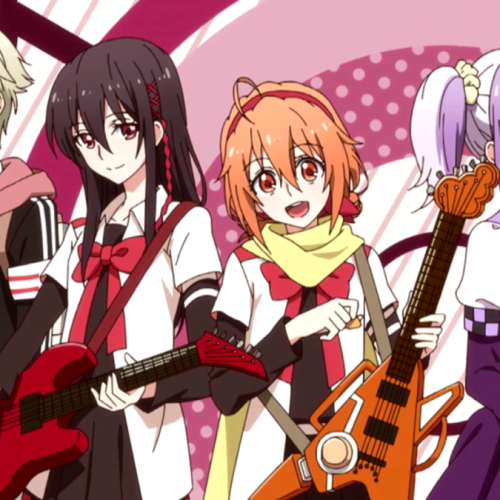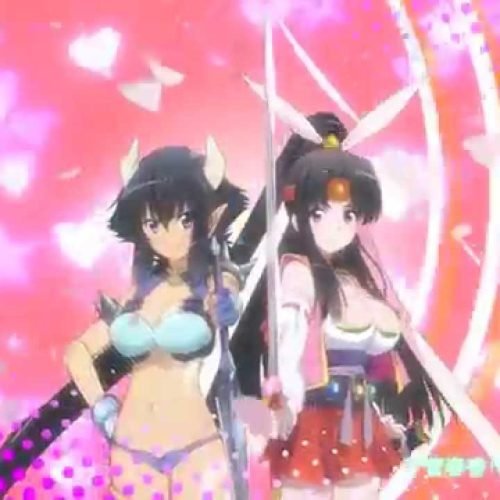Introduction of “Death Parade”
Death Parade is an anime series that makes you think about life, death, and how humans decide what’s right and wrong. Yuzuru Tachikawa created, wrote, and directed the show. Madhouse, a studio known for its great animation and gripping stories, produced it. The series first aired from January to March 2015. It had 12 episodes that stuck with people who watched it. Death Parade grew out of Tachikawa’s short film Death Billiards. This short was part of the Young Animator Training Project’s Anime Mirai 2013 program.
Death Parade tells a story set in a strange bar called Quindecim. People who have just died come to this bar. A mysterious judge named Decim decides their fate. This show doesn’t show the afterlife like most stories do. Instead, it shows a special waiting place where people play games. These games show who they are and what makes them human. How they do in these games decides if they get a new life or if they disappear forever. By looking at unclear morals human mistakes, and what happens because of our choices, Death Parade makes us think deeply about what it means to be human.
Themes
Death Parade looks at some heavy and tricky ideas, like what it means to live and die, whether it’s right to judge others, and why feelings matter so much. The show makes us think about whether there’s such a thing as right and wrong that applies to everyone. It suggests that how people act depends on lots of things, like what they’ve been through before how they feel, and what society says is okay. It makes us wonder if it’s fair to judge people based on how they act in tough situations, and if anyone has the right to decide if someone else is good or bad.
The series also explores empathy and how important it is to understand other people’s views. As Decim’s character grows, Death Parade shows the limits of judging based on logic and detachment. It suggests that to understand and care for others, you need emotional depth and the ability to connect with their experiences.
Another key theme is life’s value. The series stresses the importance of treasuring life and how it can end. It looks at how people face their own death and the choices they make when they know they’ll die. By showing various characters’ struggles and regrets, Death Parade offers a touching look at what it means to be human and the complex nature of the human soul.
Story of “Death Parade”
The tale kicks off when a young pair Takashi and Machiko show up at Quindecim, a bar that serves as a space between life and death. Decim, the emotionless bartender and judge, meets them and tells them they need to play a game where their lives are at stake. Not knowing they’ve died, the couple reluctantly join a darts game, with each throw bringing back tough memories and deep fears. As they keep playing, the pair’s real feelings and hidden thoughts come out leading to a powerful ending that sets the mood for the rest of the show.
Death Parade follows an anthology format. Each episode centers on different pairs of dead people who show up at Quindecim. They play various games, like billiards, air hockey, and Twister. These games aim to push players to their emotional and mental limits. The games don’t just entertain but help uncover the darkest parts of the participants’ souls. The results often reveal surprising truths about the characters. This challenges viewers’ ideas of right and wrong.
At the core of the series stands Decim, an arbiter who seems to lack emotions. His main job is to judge souls. But as he meets more humans and learns about their lives, Decim starts to question if the judgment system is moral and fair. His encounters with a mysterious woman called the “Black-Haired Woman” or “Chiyuki,” who helps him as his assistant, make his grasp of humanity even more complex. Unlike other guests, Chiyuki keeps her memories and gives a human view on the judging process. This pushes Decim to face the limits of his own being.
As Death Parade moves forward, we see it’s not just about judging souls. The show also takes a deep look at what makes the arbiters tick and where the system they work for falls short. The anime digs into big ideas like what it means to exist why life matters, and how crucial it is to understand others. It makes us think twice about the idea of clear-cut right and wrong hinting that human feelings and life stories are too messy to fit into good or bad boxes.
Main Characters
- Decim: The head judge and barman at Quindecim. Decim seems cold and distant zeroing in on his job to evaluate souls. Yet, his meetings with different visitors and Chiyuki lead him to gain a deeper insight into human feelings and doubt his position as a judge.
- Chiyuki: A puzzling woman who helps Decim. Unlike other visitors, Chiyuki keeps her memories and gives a human view on the judging process. Her talks with Decim are key to the show’s look into right and wrong and understanding others.
- Nona: She manages the arbiters and watches over the judgment process and how Quindecim runs. She gets humans better than most and plays a big part in helping Decim grow.
- Clavis: He drives the elevator that brings guests to Quindecim. Clavis has a sunny personality and helps out with judging people.
- Ginti: He’s another arbiter working at a different bar. Ginti judges people more and doesn’t believe in them much, which is very different from Decim’s growing understanding of humans.
Background Information of “Death Parade”
Creator and Studio:
Yuzuru Tachikawa created, wrote, and directed Death Parade. Madhouse produced the series. This studio has a reputation for top-notch animation and a wide array of anime. Death Billiards, a short film, sparked the idea for the series. This film was part of the Anime Mirai 2013 program, which aims to help young animators grow.
Source Material:
Death Parade is an original creation. It doesn’t come from a manga or light novel. Instead, it builds on Death Billiards, a short film. This film introduced the idea of a bar where people judge the dead.
Release Date:
The anime ran from January 9 to March 27, 2015, with 12 episodes.
Genre:
Death Parade fits into the categories of psychological thriller, drama, and supernatural. It mixes parts of mystery and deep thinking, which makes it a one-of-a-kind show that gets you to ponder.
Visuals and Animation of “Death Parade”
Death Parade shows off eye-catching visuals and a unique art style that boosts the show’s spooky and moody feel. Madhouse’s animation is excellent, with smooth character movements and intricate backgrounds. Quindecim’s design, with its baroque and dreamlike look, builds an unusual and setting that mirrors the show’s supernatural themes.
The character designs stick in your mind, with each arbiter having standout features that make them different from the human characters. The games the guests play are imaginative and well-done often including surreal and symbolic parts that add layers to the story.
The color and lighting in Death Parade deserve special attention. This show often uses muted and one-color backgrounds, which stand out against the lively and emotional scenes. This difference in visuals puts the spotlight on the deep feelings the characters go through and the tough choices they have to make.
Sound and Music of “Death Parade”
Yuki Hayashi created the soundtrack for Death Parade, and his music fits the show’s mood and ideas well. You’ll hear everything from eerie sad tunes to lively jazz numbers, which match the show’s wide range of feelings. The opening song, “Flyers” by BRADIO, is upbeat and easy to remember, which is different from the darker parts of the show. On the other hand, the closing song, “Last Theater” by NoisyCell, has a more serious and thoughtful feel to it.
The Japanese and English voice acting in the show stands out, with impressive performances that make the characters feel real. Tomoaki Maeno (Decim) and Asami Seto (Chiyuki) give moving performances showing the emotional depths of their characters. The sound design has an impact on the viewers’ experience, including the mood-setting background noises and the effects used during the games pulling viewers deeper into the story’s world.
Review
Death Parade takes a deep dive into questions about existence and what it means to be human. It stands out from other anime by making viewers think hard about what they believe and value. The show’s well-written story layered characters, and deep thinking give viewers something to remember.
Death Parade doesn’t give clear-cut answers to the big questions it brings up. Instead, it pushes people to think about how we judge others, show empathy, and find meaning in life. The show leaves things open-ended and makes you look inward. This approach opens the door for different ways to understand the story and talk about it, which makes watching it worth your time.
Death Parade faces criticism for its brevity, which leaves some story elements unfinished. Yet, the show’s emphasis on delving into its ideas instead of wrapping up every loose end is an intentional decision that fits with its thoughtful approach. Death Parade aims to make viewers think, not to give them all the answers.
Download Death Parade






















